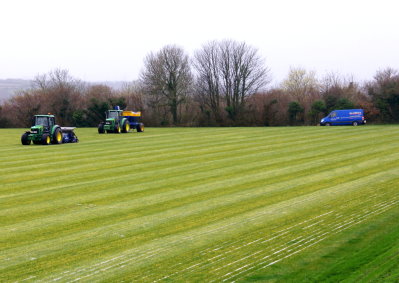
The importance of carrying out regular planned secondary drainage treatments on sports pitches, playing fields and golf courses has been highlighted by Nathan George, Contracts Manager with MJ Abbott Ltd, one of the country’s leading sports turf and water engineering contractors.
“It is vital that rainwater is able to percolate freely downwards from the surface so that it can be removed by underlying primary piped drainage systems without impedance,” stressed Nathan. “Last winter’s very wet weather highlighted many secondary drainage issues which we were able to alleviate using treatments ranging from sand and gravel banding to deep-tine aeration, scarification and sand top dressing, depending on the severity of the problem and the available budget.”
Nathan points out that main drain outfalls and ditches need to be included within any regular maintenance schedule to ensure that water is able to flow freely and consistently away from the surface and the subsoil.
“Blocked or silted drains, ditches and culverts can quickly cause water to back-up along drainage pipes, resulting in soft, wet surfaces that hamper normal play and can cost a great deal to put right,” he said. “Far better to follow a good preventive maintenance programme at the outset than having to carry out costly repairs later.”
A further area receiving close attention from MJ Abbott is the maintenance and renovation of existing sports turf and golf course drainage systems, particularly in areas where the soil has dried out and contracted during hot and dry weather, causing noticeable sinkage along the drain lines.
“Such events, where the surface becomes uneven and rippled, can cause major problems for an existing drainage system and be hazardous also for players,” pointed out Nathan. “Affected turf surfaces can reveal depressions ranging from 25mm to 150mm in depth, all of which will need re-levelling with sand and rootzone material before reseeding and watering-in.”
Due to the vagaries of the British weather, MJ Abbott recommends that consideration be made to allow for a return visit by the company during the 12 months following a new drainage installation, enabling any ground along drain lines that has settled during hot or dry weather ground to be topped-up, levelled and restored.
MJ Abbott www.mjabbott.co.uk


